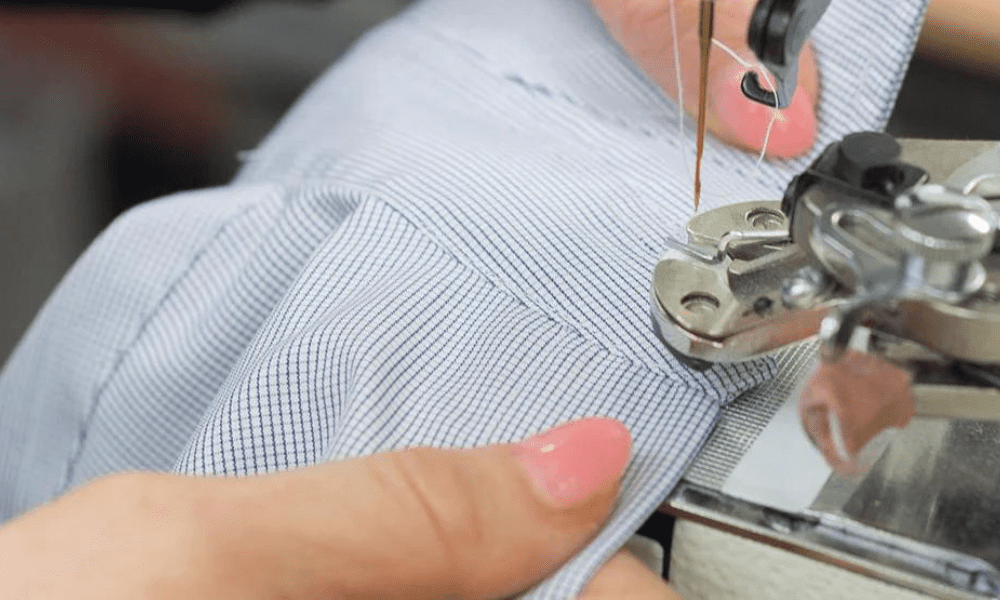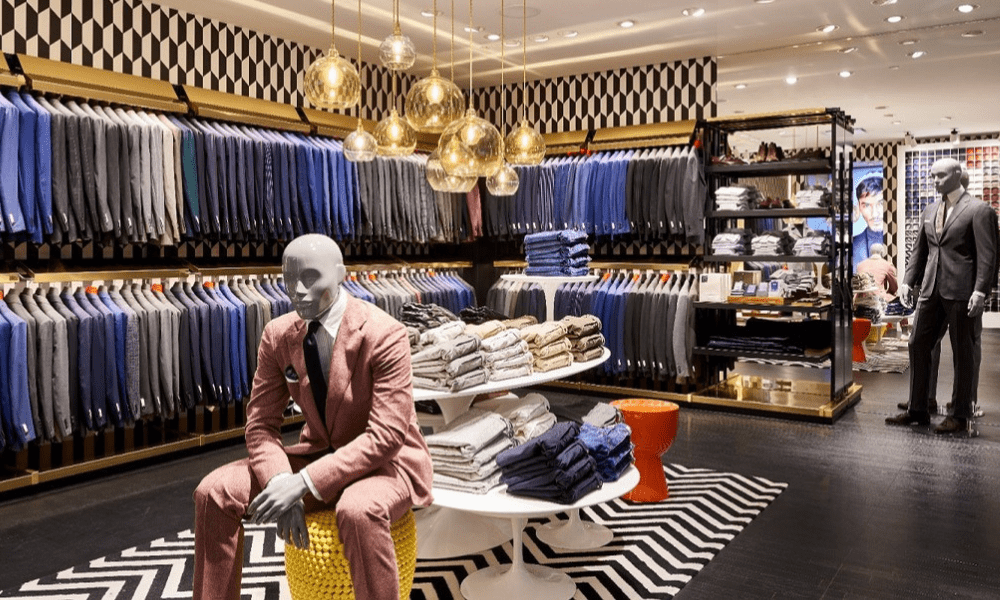

In today's world of fast fashion and off-the-rack clothing, bespoke tailoring is a prized and sought-after service. Making a bespoke shirt is a highly detailed and personalised experience tailored to the individual needs and preferences of each customer. In this article, we will explore the bespoke shirt-making process, the importance of bespoke tailoring, and how it compares to off-the-rack shirts.
Creating a bespoke shirt is a time-intensive process requiring a trained tailor. Each process step is designed to ensure the perfect fit, design, and style for the customer. Here are the key steps.
The first step in creating a bespoke shirt is an initial consultation with the tailor. During this, the tailor will discuss the customer's preferences, needs, and style. The tailor will precisely measure the customer's body to ensure a perfect fit. These measurements include shoulder width, chest circumference, waistline, sleeve length, and collar size.
The tailor will then ask about the customer's lifestyle and how they plan to wear the shirt. For example, the tailor may recommend a more formal collar style if the customer intends to wear the shirt to work. Alternatively, the tailor might suggest a relaxed fit if the customer plans to wear the shirt casually.
After the initial consultation and measurements, the customer selects from various fabric and design options. The tailor will guide the customer through the fabric selection process to ensure the material is high quality and meets the customer's needs and preferences. The design process includes choosing the collar style, cuff type, and other customisations the customer wishes to make.
The tailor may also provide recommendations on fabric and design based on the customer's desired outcome. For example, if the customer lives in a hot climate, the tailor may recommend a lighter fabric to keep them cool and comfortable.
The tailor crafts a pattern for the shirt based on the customer's measurements and design preferences. The pattern helps ensure a perfect fit and design for the customer and can be used as the building block for future orders.
Though it is a good starting point, the tailor may still adjust the pattern based on the customer's body shape or personal inclination. For example, if the customer has broad shoulders, the tailor may adjust the pattern to ensure a comfortable fit in that area.

Once the pattern is complete, the fabric is carefully cut and sewn by hand, with great care taken to ensure the fabric matches the pattern and the shirt's design. Additional touches may be included, such as reinforced stitching in areas most likely to experience wear and tear.
After the shirt is complete, the customer returns for a fitting session. Seeing the garment on the customer allows the tailor to understand how it currently fits and if any final adjustments are needed. The fitting session is a crucial step in the process as it ensures the shirt fits the customer's body perfectly. Tweaks can include adjusting the shirt's body or sleeve length.
The final touches are added, and the shirt is ready for delivery. These typically include ironing, cleaning, and any other customisations the customer requests. The result is a high-quality, personalised shirt that fits perfectly and reflects the customer's unique style.
A bespoke shirt is a timeless piece of clothing that is made to last. The attention to detail and craftsmanship that goes into creating a the piece ensures that it will be a cherished item in the customer's wardrobe for years to come.

Bespoke tailoring offers several advantages that you won't get with an off-the-rack shirt. These include a personalised fit and the comfort that comes with it. But also a chance for the customer to promote their unique style and design. The fact that the process needs quality craftsmanship adept at using the best materials only supports it as a long-lasting and sustainable method of buying clothes.
A bespoke shirt is designed to fit the customer's body perfectly. That means maximum comfort and ease of movement. The tailor considers the customer's unique body shape and measurements to produce a shirt that fits like a glove.
Moreover, bespoke tailoring can accommodate any unique physical features the customer may have. For example, if the customer has a longer or shorter than average arm length, the tailor can adjust the sleeve length accordingly. With off-the-rack, men are pigeonholed into industry-standard sizes.
Bespoke shirts allow for custom design options that are not available with off-the-rack clothing. Customers can select from a wide variety of fabrics, designs, and customisations to create a shirt that is uniquely theirs.
Furthermore, bespoke tailoring allows a tailor to advise on the best styles and designs to flatter the customer's body shape and enhance their features. This level of individuality and attention to detail is impossible with off-the-rack clothing.
Bespoke tailoring is a craft that requires skill and attention to detail. The tailor uses high-quality materials and fabrics to create a high-quality finished product. Bespoke shirts are also designed to last longer than off-the-rack clothing.
Each garment is painstakingly crafted by hand, with the tailor paying close attention to every stitch and seam. This level of care and precision ensures that the finished product is of the highest quality and will stand the test of time.
Bespoke shirts are, by their make-up, made to last longer than off-the-rack clothing, reducing waste and promoting sustainable fashion.
Moreover, bespoke tailoring promotes sustainable fashion by encouraging customers to invest in high-quality, long-lasting garments rather than buying cheap, disposable clothing. Therefore helping to promote a more ethical and sustainable fashion industry.

Off-the-rack shirts have been a popular choice for many years in the fashion world. They are readily available and can be found in almost any clothing store. However, they cannot compete with the quality and personalised service of bespoke tailoring. Here are some key differences between the two options:
One of the biggest differences between bespoke and off-the-rack shirts is the fit and sizing. Off-the-rack clothing is made to fit a broad range of body types and sizes, making it difficult to find a perfect fit. This can lead to discomfort and a lack of confidence in one's appearance. Bespoke shirts, on the other hand, are designed to fit the individual body shape and measurements of each customer, ensuring a perfect fit.
Another advantage of bespoke shirts is the wide variety of customisation options available. Off-the-rack clothing offers limited customisation options, with only a few styles and designs. However, bespoke shirts offer various fabric, design, and customisation options, allowing customers to create a shirt that reflects what they truly want. Every detail can be customised to create a truly one-of-a-kind shirt, from the collar and cuffs to the buttons and pockets.
Bespoke shirts are typically more expensive than off-the-rack clothing. However, they offer more value in the quality of materials, craftsmanship, and personalised service. The materials used in bespoke shirts are of the highest quality, ensuring they last longer than off-the-rack clothing. Additionally, the craftsmanship of creating a bespoke shirt is unparalleled, with each shirt being made by hand to ensure the finest finish. While the initial cost of a bespoke shirt may be higher, it will ultimately provide more value in the long run, as it will not need to be replaced as frequently as off-the-rack clothing.
Purchasing a bespoke shirt requires a time investment, as they are personalised and made to order. The whole process could take several weeks or even months, depending on the design's complexity and the materials' availability. Off-the-rack clothing, on the other hand, is readily available and can be purchased on the spot. With careful planning and communication with the tailor, the turnaround time for bespoke shirts can be minimised, ensuring that customers receive their shirts promptly without sacrificing quality.
Bespoke tailoring is a highly personalised service that offers many advantages over off-the-rack clothing. The bespoke shirt-making process involves careful consultation, precise measurements, custom design options, and quality craftsmanship. Bespoke shirts are designed to fit perfectly, reflect the customer's unique style and preferences, and promote sustainable fashion. While more expensive and time-intensive than off-the-rack clothing, bespoke tailoring offers more value in quality and personalised service.